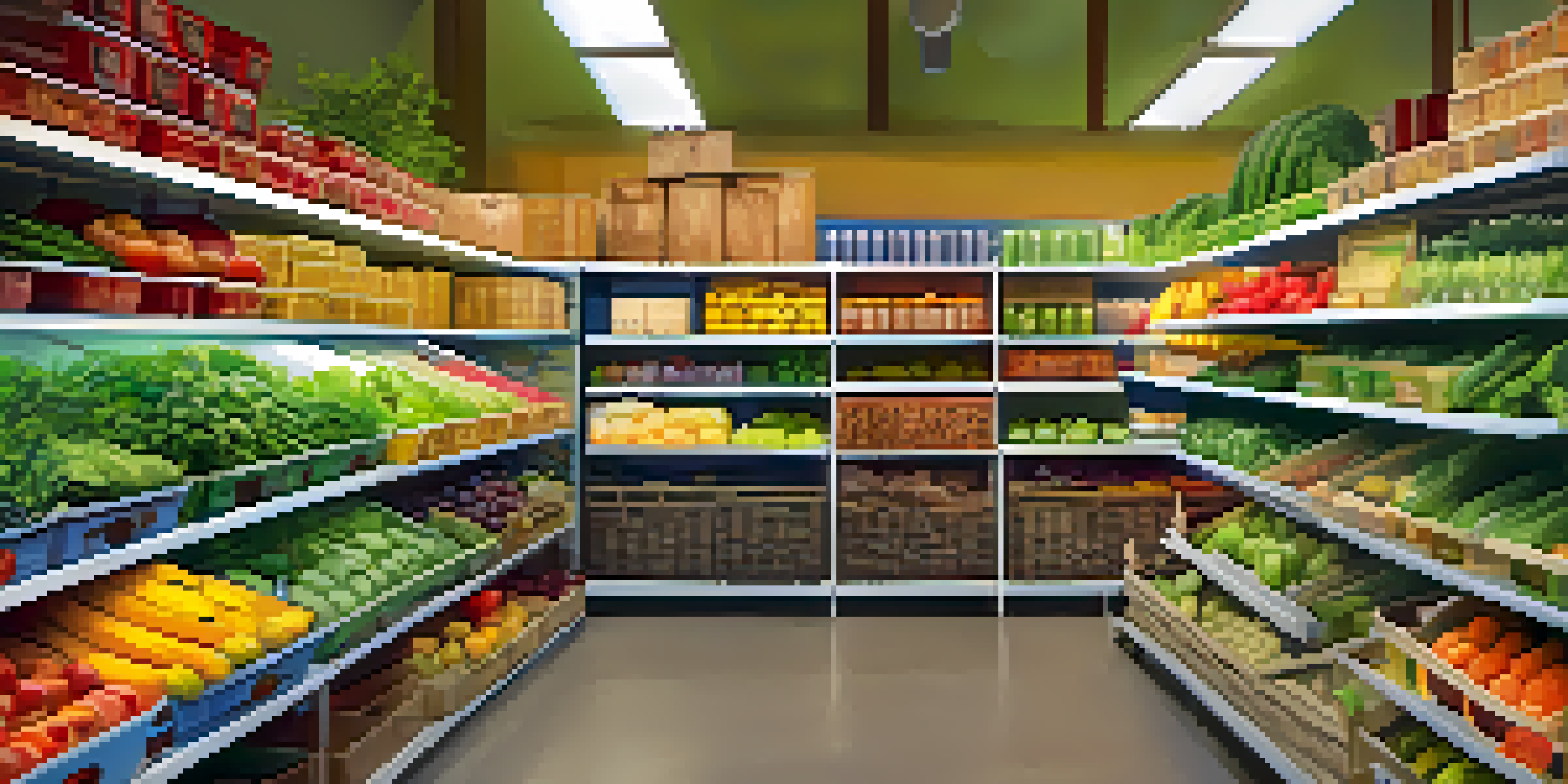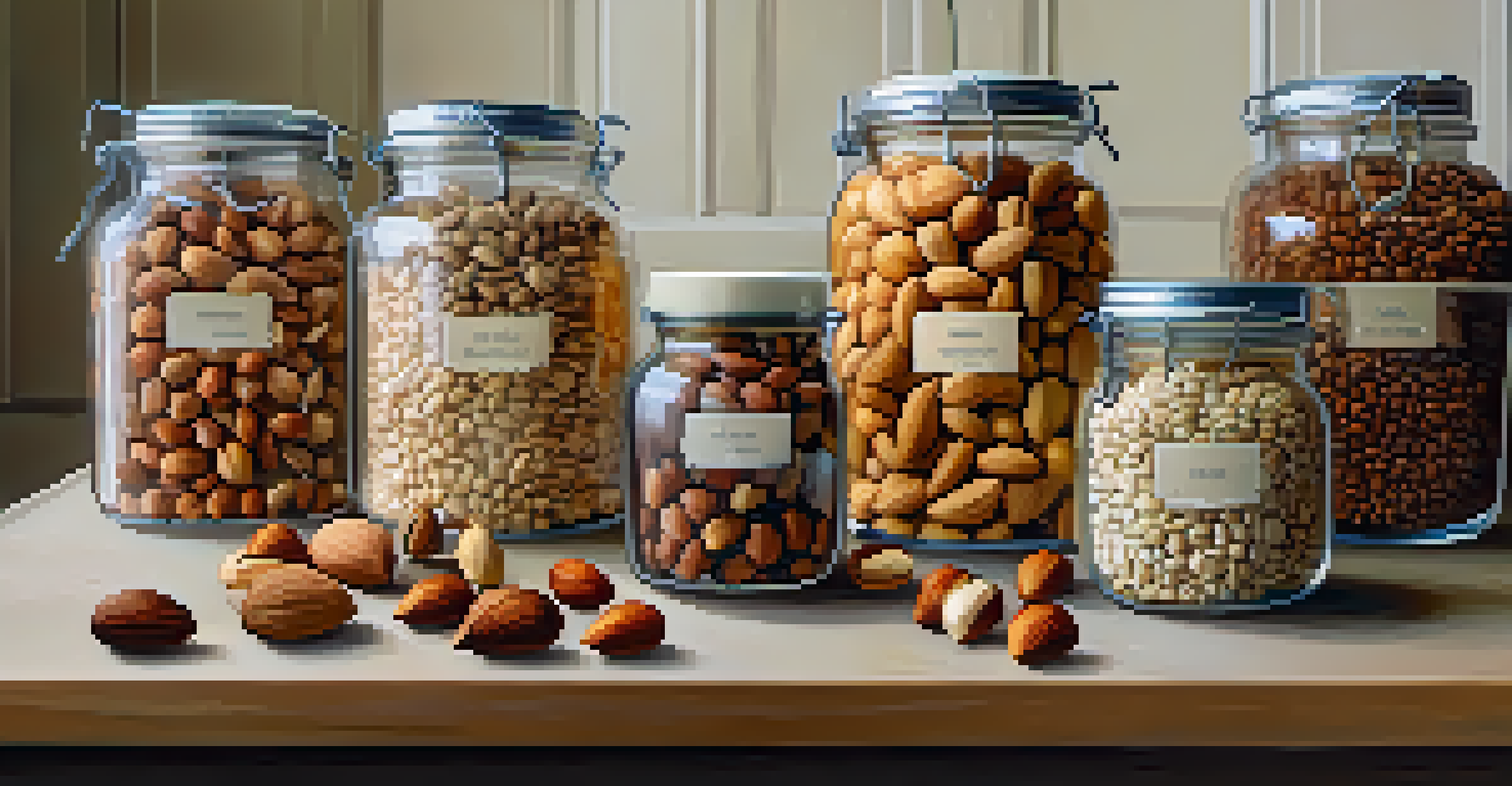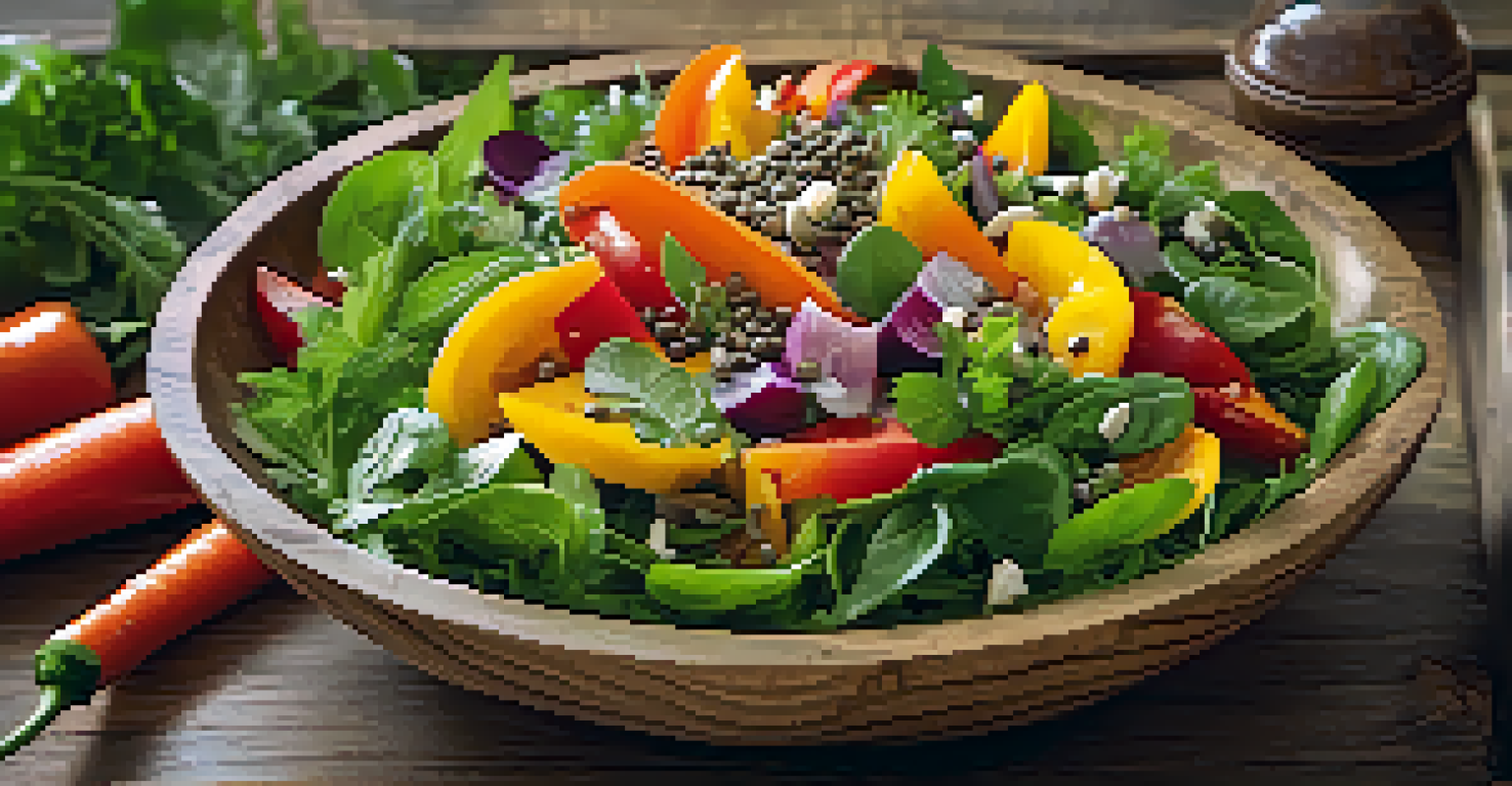Essential Foods to Start Your Raw Food Pantry Successfully

Understanding the Raw Food Diet Basics
Starting a raw food pantry begins with understanding the diet's foundation. A raw food diet primarily consists of unprocessed, uncooked plant-based foods. This means embracing fruits, vegetables, nuts, seeds, and sprouted grains that are packed with nutrients.
Let food be thy medicine and medicine be thy food.
The key philosophy here is that cooking can destroy vital enzymes and nutrients, making raw foods more beneficial. By consuming these foods in their natural state, you tap into their full potential. This understanding sets the stage for the foods you’ll choose to stock your pantry.
As you embark on this journey, remember that variety is essential. Including a mix of different raw foods will not only help keep your meals exciting but also ensure you're getting a broad spectrum of nutrients.
Fruits: The Sweet Staples of Your Pantry
Fruits are the star players in any raw food pantry. They offer natural sweetness and are rich in vitamins, minerals, and antioxidants. Stocking seasonal fruits like bananas, apples, blueberries, and avocados can provide delicious snacks and versatile meal bases.

Incorporating a variety of colors and types of fruits can enhance your diet significantly. For instance, citrus fruits are excellent for boosting your immune system, while berries can offer a powerful dose of antioxidants. Don’t forget to experiment with dried fruits, as they can be handy for quick energy boosts.
Embrace Variety in Raw Foods
Including a diverse range of fruits, vegetables, nuts, and seeds ensures a broad spectrum of nutrients in your raw food diet.
Remember, fresh is best, but having a few dried or frozen options can help you avoid waste and have something on hand year-round. The key is to keep your fruit choices diverse and enjoyable!
Vegetables: Fresh, Crunchy, and Nutrient-Packed
Next up are vegetables, which should form a significant part of your raw food pantry. Leafy greens like kale, spinach, and romaine are packed with vitamins A, C, and K, making them essential for salads and smoothies. Root vegetables such as carrots and beets can add crunch and flavor.
Eating raw foods can be a great way to improve your health and vitality.
Incorporating a variety of colors in your vegetable choices can also enhance both your meals and your health. For example, red bell peppers are high in vitamin C, while purple cabbage provides antioxidants. The more colorful your plate, the more nutrients you're likely to consume!
Don't hesitate to experiment with different preparations, such as spiralizing zucchini or marinating mushrooms, to add texture and flavor to your dishes. Fresh vegetables are the backbone of any raw food diet, offering endless possibilities.
Nuts and Seeds: Protein Powerhouses
Nuts and seeds are crucial for adding healthy fats and protein to your raw food pantry. Almonds, walnuts, chia seeds, and pumpkin seeds are excellent choices, providing essential fatty acids and nutrients. They can be enjoyed as snacks or added to meals for extra crunch.
In addition to being delicious, nuts and seeds are incredibly versatile. You can use them to make nut butters, sprinkle them on salads, or blend them into smoothies for added creaminess. They also serve as great sources of energy for those long, busy days.
Utilize Herbs and Spices Creatively
Herbs and spices can transform simple dishes into flavorful meals while providing various health benefits.
Just remember to soak nuts and seeds before consuming, as this enhances their digestibility and nutrient absorption. A well-stocked selection of these powerhouses can elevate your raw meals significantly.
Grains and Legumes: Raw Variations to Explore
While many grains are typically cooked, there are raw options worth exploring. Quinoa, for example, can be sprouted and used in salads or bowls. Similarly, sprouted lentils are nutrient-dense and can provide a hearty addition to any meal.
These raw grains and legumes can be a fantastic way to introduce more fiber into your diet. They can also serve as a base for dishes, allowing you to create filling meals without cooking. Experimenting with sprouting can be a fun and rewarding process!
Keep in mind that while these items are not traditionally raw, there are many ways to incorporate them into your meals without cooking. A few well-chosen grains and legumes can round out your pantry beautifully.
Herbs and Spices: Elevate Your Raw Creations
Herbs and spices are the secret weapons of a raw food pantry, adding flavor and depth to your dishes. Fresh herbs like basil, cilantro, and parsley not only enhance taste but also offer numerous health benefits. They can easily transform a simple salad into something extraordinary.
In addition to fresh options, consider adding dried spices such as cumin, turmeric, and paprika. These can add warmth and complexity to your meals, making them more satisfying. Plus, many spices have incredible health benefits, from anti-inflammatory properties to digestive support.
Focus on Freshness and Quality
Stocking your pantry with fresh, organic, and locally-sourced ingredients supports health and sustainability.
Don't shy away from experimenting with different combinations of herbs and spices. A little creativity can go a long way in making your raw meals not only healthy but also delicious and exciting.
Superfoods: Boost Your Nutrition Game
Superfoods are an exciting addition to your raw food pantry, packed with concentrated nutrients. Ingredients like spirulina, maca powder, and cacao nibs can elevate your meals and smoothies. They not only enhance flavor but also provide an extra boost of vitamins and minerals.
Incorporating superfoods into your diet can be as simple as adding a spoonful of chia seeds to your smoothie or sprinkling hemp seeds on your salad. These tiny powerhouses deliver big nutritional benefits without requiring significant changes to your routine.

While superfoods can be a bit pricier, they can be used sparingly and still contribute to your overall health. Keeping a small selection on hand allows you to experiment and discover which ones you enjoy most.
Stocking Your Raw Food Pantry: Final Tips
As you build your raw food pantry, remember that freshness is key. Aim to stock your pantry with organic, locally-sourced produce whenever possible. This not only supports your health but also the environment and your local economy.
Consider investing in airtight containers to keep your nuts, seeds, and dried fruits fresh longer. Proper storage can prevent spoilage and help you maintain the quality of your ingredients. A well-organized pantry makes it easier to whip up delicious raw meals.
Build a Diverse Raw Food Pantry
Stocking a variety of fruits, vegetables, nuts, seeds, and grains ensures you get a broad spectrum of nutrients.
Finally, don't forget to continually explore new ingredients and recipes. The world of raw food is vast and filled with exciting possibilities. Embrace the adventure, and you’ll find that maintaining a raw food pantry can be both enjoyable and rewarding.